Introduction
If you’ve ever left a bowl of cooked rice out on the counter for a few hours and wondered if it was still safe to eat, you’ve already faced a TCS food safety dilemma. Many foodborne illnesses don’t come from “obviously spoiled” food but from items that look fine yet have been sitting in unsafe conditions for too long.TCS Foods Explained
TCS foods — short for Time/Temperature Control for Safety foods — require special attention because they’re the perfect breeding ground for harmful bacteria when not handled correctly. Whether you’re a restaurant owner, chef, food handler, or just a home cook who wants to avoid stomach troubles, understanding TCS foods is essential. TCS Foods Explained
This guide will walk you through what TCS foods are, why they’re risky, how to store them safely, and the legal standards you need to know. TCS Foods Explained
What Are TCS Foods?

Definition
TCS foods are foods that need strict control of time and temperature to prevent the growth of bacteria and other pathogens. Without these controls, microorganisms can multiply rapidly, leading to foodborne illnesses. TCS Foods Explained
Why It Matters
Bacteria such as Salmonella, E. coli, and Listeria can grow quickly in certain foods if left in the “danger zone” — 41°F to 135°F (5°C to 57°C) — for too long. Even a small lapse can turn safe food into a health hazard. TCS Foods Explained
The Science Behind TCS Foods
The Danger Zone
Microorganisms thrive in warm, moist environments with nutrients — exactly what TCS foods offer. The USDA and FDA warn that food should not stay in the danger zone for more than 2 hours (or 1 hour if above 90°F/32°C). TCS Foods Explained
Bacterial Growth Curve

When bacteria enter favorable conditions, they reproduce exponentially. For example:
- At optimal temperatures, some bacteria can double every 20 minutes.
- In just 7 hours, one bacterium can multiply to over 2 million.
Examples of TCS Foods
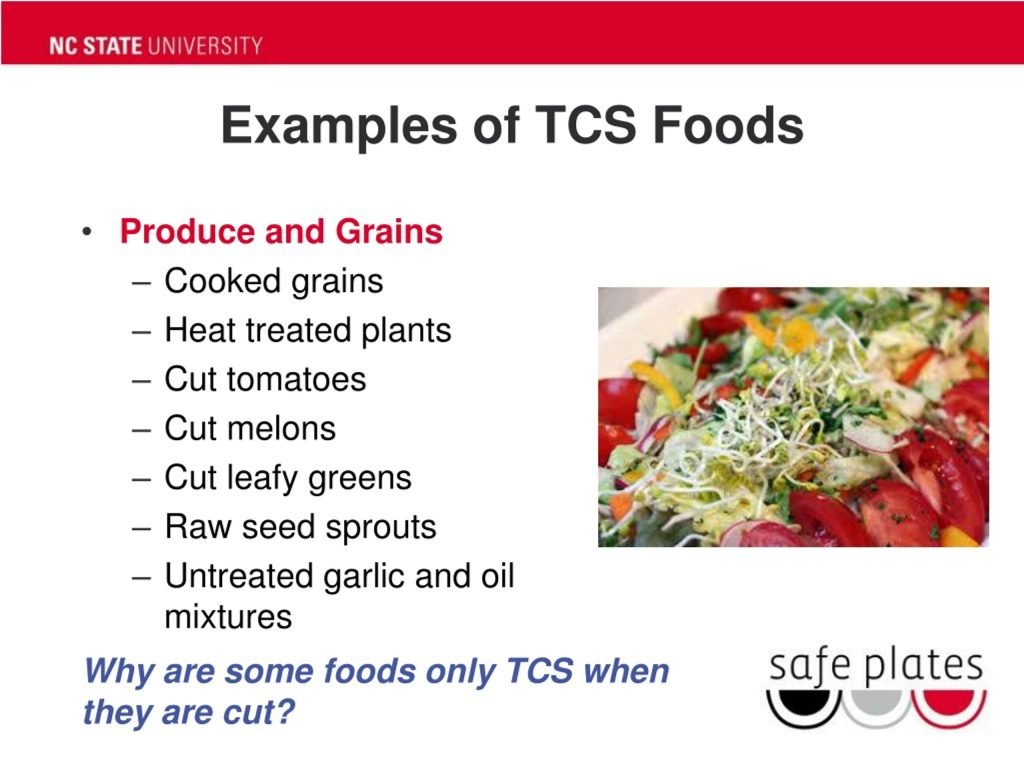
TCS foods are not limited to meat and dairy — many plant-based foods also fall into this category. TCS Foods Explained
Animal-Based TCS Foods
- Meat & Poultry: beef, chicken, turkey, pork.
- Seafood: fish, shellfish, crustaceans.
- Dairy: milk, cream, cheese, yogurt.
- Eggs: raw or partially cooked.
Plant-Based TCS Foods
- Cooked rice, pasta, and potatoes.
- Cut melons, tomatoes, and leafy greens.
- Cooked beans and lentils.
Ready-to-Eat TCS Foods
- Sandwiches, sushi, salads.
- Deli meats and pâtés.
Time Control in TCS Foods
The 2-Hour Rule
If TCS foods are left in the danger zone for more than 2 hours, bacteria can multiply to dangerous levels. TCS Foods Explained
The 4-Hour Rule
Some guidelines allow up to 4 hours under certain conditions, but this is a maximum limit and not a best practice. TCS Foods Explained
Temperature Control in TCS Foods
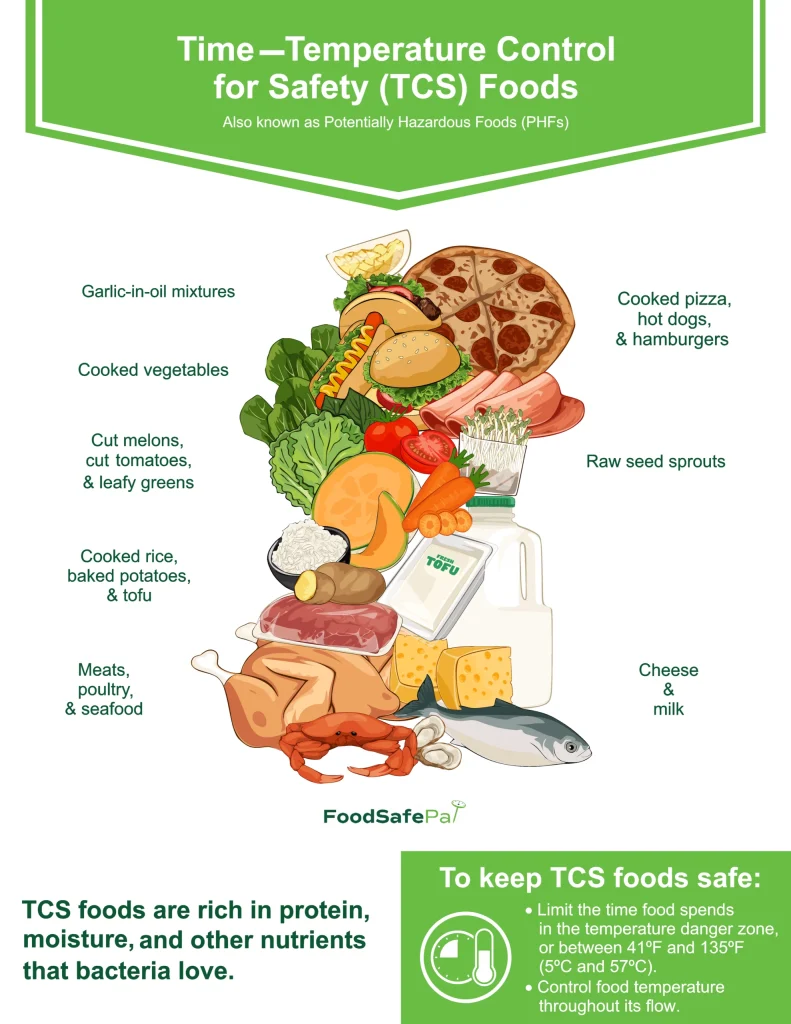
Cold Holding
Keep cold foods at 41°F (5°C) or below. This slows bacterial growth significantly.
Hot Holding
Keep hot foods at 135°F (57°C) or above. This prevents bacteria from multiplying.
Rapid Cooling
When cooling hot food, bring it from 135°F to 70°F (57°C to 21°C) within 2 hours, then from 70°F to 41°F (21°C to 5°C) within 4 hours.
Handling TCS Foods in Commercial Kitchens
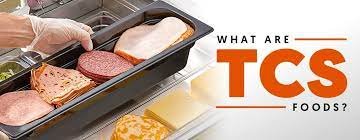
Receiving Shipments
- Check the temperature of perishable deliveries.
- Reject items in the danger zone.
Storage
- Use FIFO (First In, First Out).
- Label items with preparation and expiry dates.
Preparation
- Wash hands before handling.
- Use separate cutting boards for raw and cooked items.
Cooking Temperatures
- Poultry: 165°F (74°C).
- Ground meats: 155°F (68°C).
- Seafood & steaks: 145°F (63°C).
Labeling and Date Marking
Most food safety codes require that ready-to-eat TCS foods be date-marked and used within 7 days if stored at or below 41°F.
TCS Foods at Home – Simple Safety Tips
- Refrigerate leftovers promptly.
- Never thaw at room temperature — use the fridge or cold water method.
- When in doubt, throw it out.
- TCS Foods Explained
Common Myths About TCS Foods
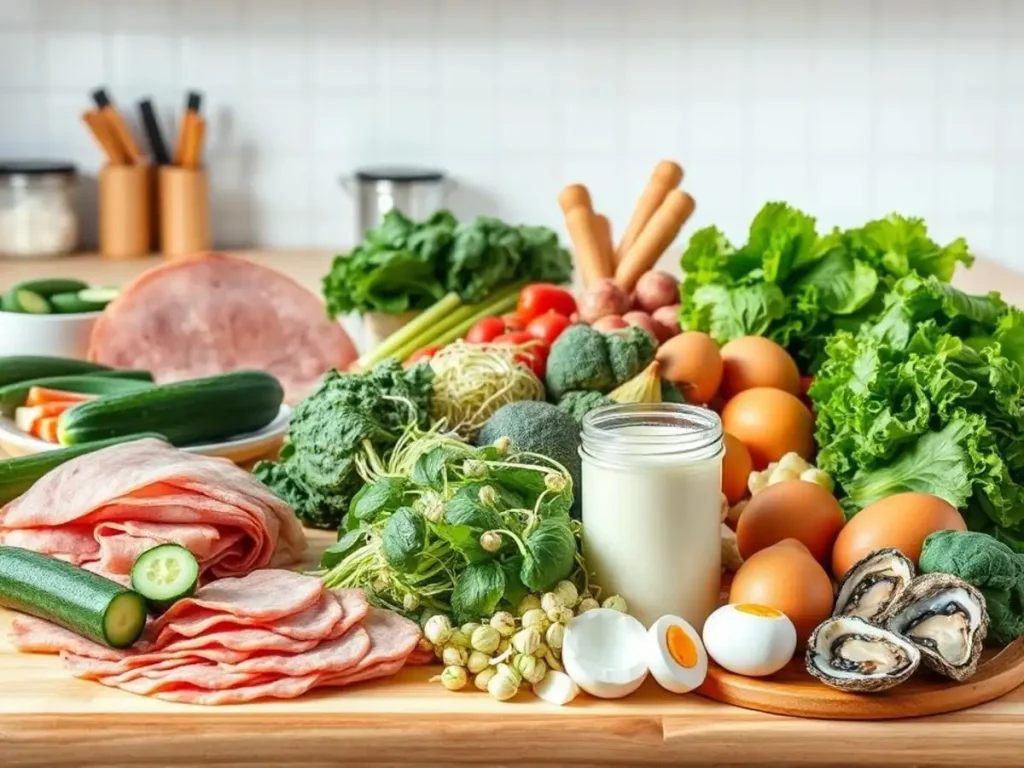
- Myth: “If it smells fine, it’s safe.”
- Fact: Harmful bacteria often don’t affect smell or taste.
- Myth: “Freezing kills bacteria.”
- Fact: Freezing only pauses bacterial growth; they become active when thawed.
Legal Requirements & Industry Standards
In the US, the FDA Food Code provides guidance for TCS foods. In other countries, similar regulations exist — such as FSA in the UK, FSANZ in Australia, and Punjab Food Authority in Pakistan.
Cold Chain Logistics for TCS Foods
Companies like TCS Pakistan, FedEx, and DHL maintain strict temperature control during transport of perishable goods — using insulated containers, gel packs, and real-time temperature monitoring. TCS Foods Explained
Case Study The Cafe That Fixed Its TCS Handling
A small cafe in Karachi faced repeated customer complaints about upset stomachs. An audit revealed improper cooling of cooked rice. After implementing strict temperature logs and investing in blast chillers, complaints dropped to zero, and customer trust returned. TCS Foods Explained
Frequently Asked Questions
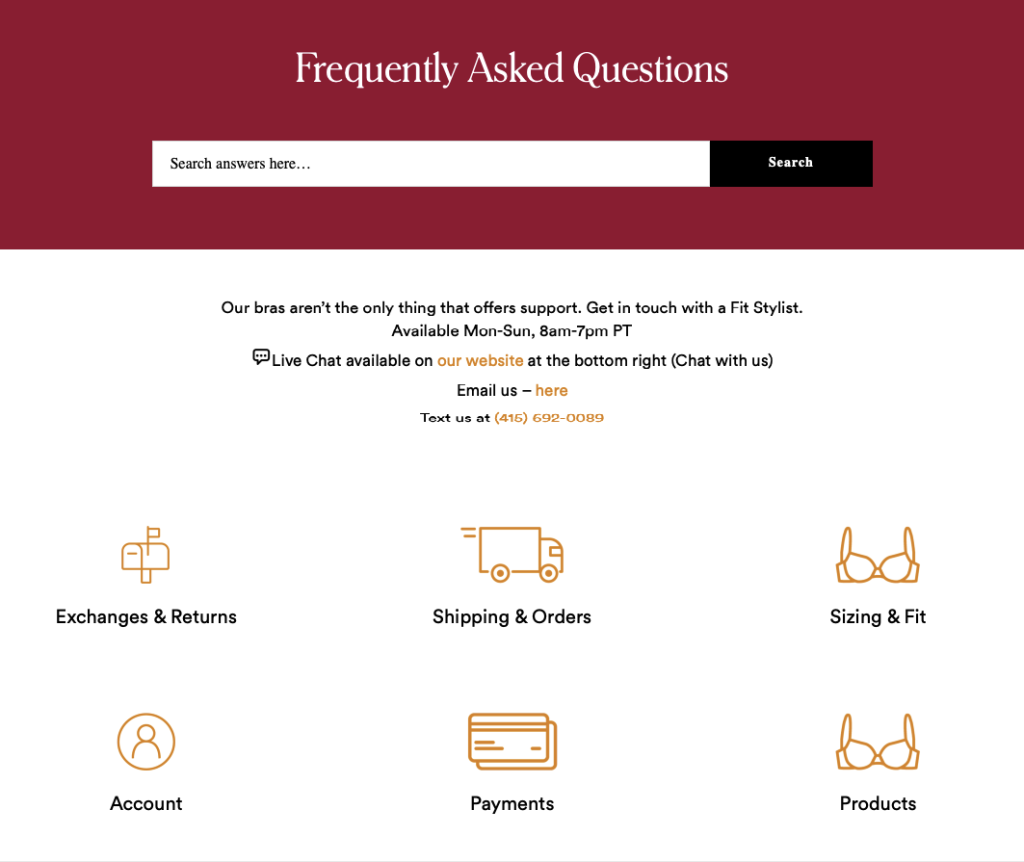
Q: What is the most common TCS food?
A: Dairy products like milk and cheese are among the most common.
Q: Can fruits be TCS foods?
A: Yes — cut melons and tomatoes are prime examples.
Q: How long can you hold hot food safely?
A: Ideally no more than 4 hours, but best to serve immediately.Final Safety Checklist for TCS Foods
